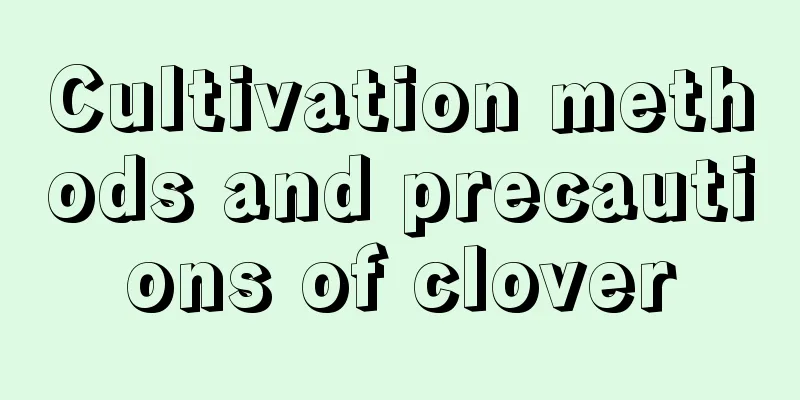What fertilizer is best for orchids?

|
Orchids are common ornamental flowers with graceful postures, green leaves and fresh flowers. Many friends of ours grow them. When fertilizing orchids, you must follow the principle of applying small amounts of fertilizer frequently. So what fertilizer is best for orchids? Let’s take a look with the editor below. 1. What fertilizer is best for orchids? 1. Organic fertilizer Organic fertilizers contain nitrogen, phosphorus and potassium elements. Commonly used ones include cow dung fertilizer, chicken manure fertilizer and soybean cake fertilizer. They all need to be fully fermented, and after being decomposed, they are diluted with water to become a thin fertilizer liquid before being used for orchids. Regular watering can supplement nutrients for orchids. If you use cake fertilizer, you can add an appropriate amount of ordinary compound fertilizer to make the fertilizer liquid more comprehensive. 2. Special slow-release fertilizer The slow-release fertilizer specially made for orchids is for lazy people only. It is easy to use, has a long-lasting and gentle fertilizer effect, and will not cause any harm to the roots of orchids and the tender shoots of the plants. Generally, the fertilizer effect can last for half a year after one use. It can effectively promote the growth and strength of orchid roots. Be careful not to use it excessively, otherwise it will cause root burn. 3. Water-soluble fertilizer Common water-soluble fertilizers include the Huaduoduo series of water-soluble fertilizers and the Aolv series. These fertilizers can be diluted and used for root irrigation or sprayed on the leaves. It can be used as top dressing, is easy to use, and can be quickly absorbed by plants. Note that water-soluble fertilizers need to be diluted according to the ratio before use. If you want to irrigate the roots, you need to moisten the soil first and then water it, otherwise the potting soil will dry out and easily burn the seedlings. 2. How to fertilize orchids? 1. Spring and summer Spring and summer are the germination period for orchids. You can apply germination fertilizer to promote the growth of new buds. It should be noted that you need to pay attention to the time of fertilization. It is best not to fertilize in the morning. You can choose to fertilize in the evening or in a dark place. 2. Autumn Autumn is the growth period of orchids, and the plants consume a lot of nutrients and need to be replenished in time. When applying fertilizer, it is best to use phosphorus and potassium fertilizers as the main fertilizer and nitrogen fertilizers as the supplement. You can also spray some organic liquid fertilizers, which is beneficial to the growth of orchids. 3. Winter It is cold in winter and orchids enter a dormant period. Fertilization should be reduced or stopped. Solid fertilizer can be applied before winter comes. This will help enhance the plant's cold resistance, allowing the plant to survive the winter smoothly and also prepare for the plant's later growth. The above is an introduction to the best fertilizer for orchids. Orchids need to wait until the second year to be fertilized, which is beneficial to provide nutrients for the plants and promote flowering. When fertilizing, nitrogen fertilizer needs to be used before flowering, which is beneficial to the growth of flower buds. Phosphorus and potassium fertilizers can be applied after flowering, which is beneficial to timely replenishment of nutrients.
|
<<: What fertilizer is good for asparagus fern? Can I use quick-acting compound fertilizer?
Recommend
What is the best row spacing and plant spacing for celery planting?
Celery Planting Spacing When planting celery, the...
How to take care of the newly bought golden banyan
1. Lighting Ficus microcarpa likes light, especia...
How many days does it take for wheat to sprout?
Wheat is an important cereal crop. Its growth cyc...
How to grow palm in water after growing it in soil
1. Remove the pot and prune the roots If you want...
How to propagate Lycoris
Seed propagation of Lychnos Lycoris radiata can b...
How to prune Phalaenopsis after flowering
Pruning Phalaenopsis after flowering When pruning...
How to care for goldenrod potted plants
1. The habit of this plant Because it is a tropic...
What flowers are suitable for growing in Chifeng? What are the city flowers and trees?
1. Climate characteristics of Chifeng Chifeng has...
How long is the growth cycle of dianthus?
Introduction to Dianthus Growth Dianthus likes to...
Causes and treatments for yellow iris leaves
1. Too much light Reason: Iris prefers a semi-sha...
What fish can be raised together with Arowana?
Arowana has high ornamental value and bright colo...
Cultivation methods and precautions of shrimp flower
Shrimp Flower is relatively easy to grow. It like...
What to do if the leaves of African jasmine wilt and the new branches turn yellow
What to do if the leaves of African jasmine wilt ...
Planting methods and precautions for potted lotus bonsai lotus seed planting steps
Before planting potted lotus, you need to prepare...
orchid price
1. Orchid Price There are many varieties of orchi...









